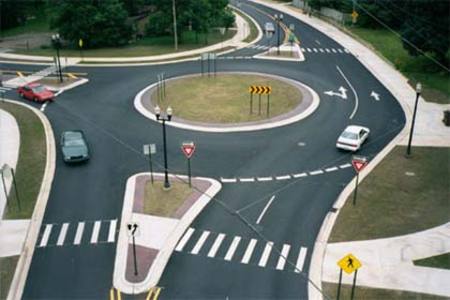Unique Application of Federal Supremacy; few know that a Speed Limit Sign is a federal device and most installations are not compliant with governing law.
Speed Limit Sign (R2-1): Not only is the shape, size, color, placement, hardware, reflective backing quality and the breakaway post design set by federal regulations, the practices and procedures to determine the safety value of the number on the sign and the exercise of police powers thereof SHALL also be fact based and uniformly applied regardless of state lines, entity type or classification on any public or private roadway, pedestrian facility or bikeway open to the public within the U.S. and its territories.
Basic Tenets of Speed Laws: Laws protect the public by regulating unreasonable or unsafe actions. Actions of a reasonable person should be legal. Most people drive in a safe and reasonable manner. Laws cannot be effectively enforced without the public consent and voluntary compliance.
Speed Limit Sign (R2-1): Not only is the shape, size, color, placement, hardware, reflective backing quality and the breakaway post design set by federal regulations, the practices and procedures to determine the safety value of the number on the sign and the exercise of police powers thereof SHALL also be fact based and uniformly applied regardless of state lines, entity type or classification on any public or private roadway, pedestrian facility or bikeway open to the public within the U.S. and its territories.
Basic Tenets of Speed Laws: Laws protect the public by regulating unreasonable or unsafe actions. Actions of a reasonable person should be legal. Most people drive in a safe and reasonable manner. Laws cannot be effectively enforced without the public consent and voluntary compliance.
Clash of Diametrically Opposed Forces:
A camera system’s vetting process by definition requires that a quantified engineering defect be identified and then, by design, remain uncorrected.
The larger the identified engineering defect, the more the system operators are financially rewarded for unsafe practices and negligence.
Cameras do not reduce accidents caused by engineering defects and at most locations their presence has actually caused accident rates to increase.
A camera system’s vetting process by definition requires that a quantified engineering defect be identified and then, by design, remain uncorrected.
The larger the identified engineering defect, the more the system operators are financially rewarded for unsafe practices and negligence.
Cameras do not reduce accidents caused by engineering defects and at most locations their presence has actually caused accident rates to increase.
Abstract: Inclement weather reduces visibility. This problem is further exacerbated by the need to mount headlights higher on the equipment so they shine over the plow blades. This often results in the plow lights being almost at the operators’ eye level. This is the worst condition for reflecting light back into the snowplow driver’s eyes, further obscuring their vision. This headlight position also reduces visibility for oncoming traffic since the headlights are higher than normal. The additional colored beacon lights that are used on plows as warning devices also reflect off of the snow into the operator’s eyes. In addition to the reduced vision caused by these problems, increased driver fatigue is experienced.
The objectives of this research is to improve snowplow operator visibility and to reduce driver fatigue during plowing operations.
Oso, WA • SR 530 • 2.25 mile segment • MP 32.75 to 35.00
Post Installation Synopsis Looking Forward
